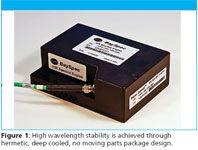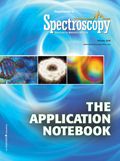Ruggedized NIR Spectrometers: Pharmaceuticals/Neutraceuticals/Food/Ag/PAT
Confirming the water content of pharmaceuticals and food during processing is critical for GmP results. The ability to measure water content until recently has been a difficult challenge until now. As a result of developments in the telecom industry, NIR spectrometers offer highly repeatable, cost effective solutions.
Assuring Water Content During Blending and Mixing Results with NIR Spectrometer
Confirming the water content of pharmaceuticals and food during processing is critical for GmP results. The ability to measure water content until recently has been a difficult challenge until now. As a result of developments in the telecom industry, NIR spectrometers offer highly repeatable, cost effective solutions.

Figure 1
It has been well documented that NIR spectroscopy is an excellent method to measure water in powder mixtures. However, absorption curves are different for each given process and are developed for a given manufacturer's process. Once completed, the understanding and control of the blending process has significant benefits and typically pays for the metrology in time savings, waste reduction, faster time to market, reduced maintenance on machinery, and faster process certification.
Better process control and process understanding has intangible benefits as well. With subtle problems sometimes knowing where not to look can have great value.

Figure 2
Blend Uniformity Measurement
The same instrument that can measure your water during process has the ability to assure blend uniformity. In 2004 the FDA published a guidance document for PAT. The real intent of the document is to get manufacturers to fully understand their product completely during the production cycle. This has many benefits, not the least of which is if the FDA has confidence that the manufacturer understands his processes thoroughly, they are more willing to allow changes to the production process. The manufacturer knowing his product better knows where economies can be improved without adversely affecting product.
Benefits of real time in-situ NIR Spectroscopy are:
- Greater control of the process
- Reduced waste
- Improved yield
- Shorter time to market
- Optimized process times
- Better process understanding
- Real-time feedback
- Reduced maintenance
- Minimal operator involvement
- Optimizes equipment utilization
- Improved process documentation
- Reduced manufacturing costs
- Better lot-to-lot uniformity
BaySpec, Inc.
101 Hammond Avenue • Fremont, CA 94539 USA
Tel. (510) 661-2008, Fax (510) 661-2009

Thermo Fisher Scientists Highlight the Latest Advances in Process Monitoring with Raman Spectroscopy
April 1st 2025In this exclusive Spectroscopy interview, John Richmond and Tom Dearing of Thermo Fisher Scientific discuss the company’s Raman technology and the latest trends for process monitoring across various applications.
A Seamless Trace Elemental Analysis Prescription for Quality Pharmaceuticals
March 31st 2025Quality assurance and quality control (QA/QC) are essential in pharmaceutical manufacturing to ensure compliance with standards like United States Pharmacopoeia <232> and ICH Q3D, as well as FDA regulations. Reliable and user-friendly testing solutions help QA/QC labs deliver precise trace elemental analyses while meeting throughput demands and data security requirements.